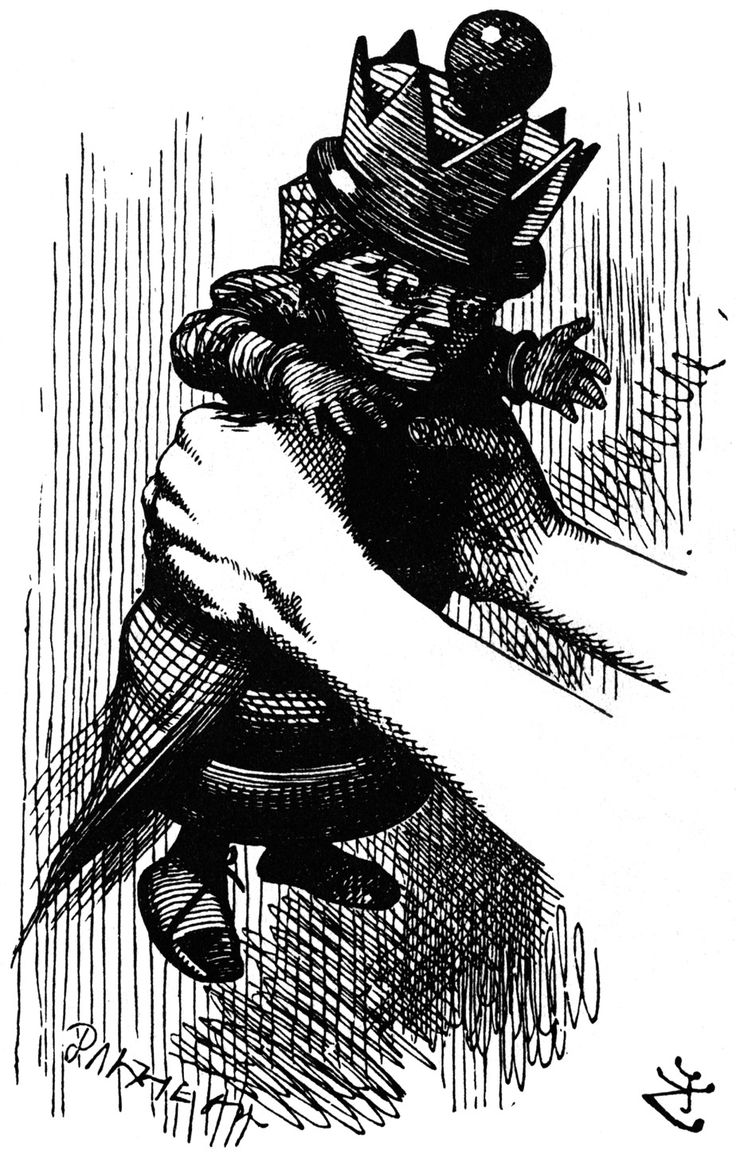
Getting hands on with the Red Queen. Illustration by John Tenniel from Lewis Carroll’s 1871 Through the Looking Glass. Wikimedia commons.
We designed this simple, cheap in-class exercise to teach the fundamentals of host-parasite coevolution to high school and college students. All you need is two decks of playing cards for each pair of students. One student plays the “host” and the other plays the “parasite.” Each card suit is a different genotype, and a parasite can infect a host if two cards have matching suits. Hosts and parasites reproduce according to their success at resisting parasites or infecting hosts, respectively. The students play multiple rounds, or generations, and personally experience rapid oscillations in genotype frequency through time, as rare suits increase and common ones decline. The game received the 2016 Thomas Henry Huxley Award from the Society for the Study of Evolution for achievement in education and outreach.
The game emphasizes four key concepts:
- Coevolution is rapid
- That which is most fit now may soon become the least fit
- If rare genotypes have an advantage, genetic variation will be maintained through time
- We can use simple models to represent complex processes and test hypotheses
Following this activity, we hope that students are able to:
- Read and interpret figures
- Decide whether to accept or reject a hypothesis based upon collected data
- Identify the assumptions of a model
- Develop additional testable hypotheses
The game works well in both high school and college classrooms. We recommend 12-15 generations of play, which requires about one hour.
This video provides an overview of how to play:
Additional resources
- The open-access publication for the game can be found here: Amanda Gibson, Devin Drown, and Curt Lively. 2015. The Red Queen’s race: an experimental card game to teach coevolution. Evolution: Education and Outreach 8:10.
- A brief powerpoint that I use to introduce the game in classrooms.
- I introduced the game to biology teachers at NABT 2016 and IRACDA scholars at their annual meeting – here’s my slides, and the notes that go with it.
- A sample worksheet, with directions
- A sample spreadsheet, blank
- Sample data from S318 Honors Evolution at IU
- If your classroom has access to computers and the internet, this shared googlesheet is a fun and informative way for students to enter their data. Each group gets their own tab for data entry – make sure they know their tab number in advance so they don’t overwrite each other’s data! We project their graphs during play so the students see real-time updates. In addition to being just plain exciting, this is helpful for highlighting interesting patterns and catching any problems. The final “metapopulation” tab automatically calculates mean genotype frequencies in the classroom as a whole. If you use this sheet through the provided link, please save it under a new name prior to entering any data.
Have you used the game in your classroom? Please send us feedback. We’d also love your students’ data. You can contact us at akg5nq@virginia.edu, dmdrown@alaska.edu, and clively@indiana.edu.







